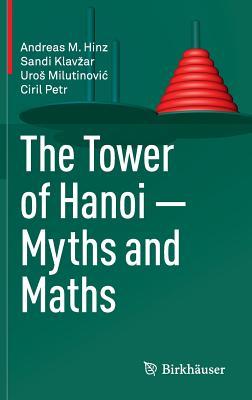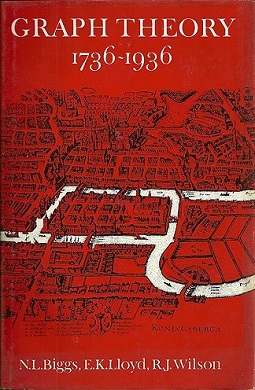Related Research Articles

George Pólya was a Hungarian mathematician. He was a professor of mathematics from 1914 to 1940 at ETH Zürich and from 1940 to 1953 at Stanford University. He made fundamental contributions to combinatorics, number theory, numerical analysis and probability theory. He is also noted for his work in heuristics and mathematics education. He has been described as one of The Martians, an informal category which included one of his most famous students at ETH Zurich, John Von Neumann.
Recreational mathematics is mathematics carried out for recreation (entertainment) rather than as a strictly research and application-based professional activity or as a part of a student's formal education. Although it is not necessarily limited to being an endeavor for amateurs, many topics in this field require no knowledge of advanced mathematics. Recreational mathematics involves mathematical puzzles and games, often appealing to children and untrained adults, inspiring their further study of the subject.

How to Solve It (1945) is a small volume by mathematician George Pólya describing methods of problem solving.
Mathematical puzzles make up an integral part of recreational mathematics. They have specific rules, but they do not usually involve competition between two or more players. Instead, to solve such a puzzle, the solver must find a solution that satisfies the given conditions. Mathematical puzzles require mathematics to solve them. Logic puzzles are a common type of mathematical puzzle.

David Breyer Singmaster was an American-British mathematician who was emeritus professor of mathematics at London South Bank University, England. He had a huge personal collection of mechanical puzzles and books of brain teasers. He was most famous for being an early adopter and enthusiastic promoter of the Rubik's Cube. His Notes on Rubik's "Magic Cube" which he began compiling in 1979 provided the first mathematical analysis of the Cube as well as providing one of the first published solutions. The book contained his cube notation which allowed the recording of Rubik's Cube moves, and which quickly became the standard.
Society for Industrial and Applied Mathematics (SIAM) is a professional society dedicated to applied mathematics, computational science, and data science through research, publications, and community. SIAM is the world's largest scientific society devoted to applied mathematics, and roughly two-thirds of its membership resides within the United States. Founded in 1951, the organization began holding annual national meetings in 1954, and now hosts conferences, publishes books and scholarly journals, and engages in advocacy in issues of interest to its membership. Members include engineers, scientists, and mathematicians, both those employed in academia and those working in industry. The society supports educational institutions promoting applied mathematics.

Principles of Electronics is a 2002 book by Colin Simpson designed to accompany the Electronics Technician distance education program and contains a concise and practical overview of the basic principles, including theorems, circuit behavior and problem-solving procedures of Electronic circuits and devices. The textbook reinforces concepts with practical "real-world" applications as well as the mathematical solution, allowing readers to more easily relate the academic to the actual.

Classical Mechanics is a textbook about that subject written by Herbert Goldstein, a professor at Columbia University. Intended for advanced undergraduate and beginning graduate students, it has been one of the standard references in its subject around the world since its first publication in 1950.
A mathematical exercise is a routine application of algebra or other mathematics to a stated challenge. Mathematics teachers assign mathematical exercises to develop the skills of their students. Early exercises deal with addition, subtraction, multiplication, and division of integers. Extensive courses of exercises in school extend such arithmetic to rational numbers. Various approaches to geometry have based exercises on relations of angles, segments, and triangles. The topic of trigonometry gains many of its exercises from the trigonometric identities. In college mathematics exercises often depend on functions of a real variable or application of theorems. The standard exercises of calculus involve finding derivatives and integrals of specified functions.
Ross Honsberger (1929–2016) was a Canadian mathematician and author on recreational mathematics.
Mathematics and Plausible Reasoning is a two-volume book by the mathematician George Pólya describing various methods for being a good guesser of new mathematical results. In the Preface to Volume 1 of the book Pólya exhorts all interested students of mathematics thus: "Certainly, let us learn proving, but also let us learn guessing." P. R. Halmos reviewing the book summarised the central thesis of the book thus: ".. . a good guess is as important as a good proof."

Chases and Escapes: The Mathematics of Pursuit and Evasion is a mathematics book on continuous pursuit–evasion problems. It was written by Paul J. Nahin, and published by the Princeton University Press in 2007. It was reissued as a paperback reprint in 2012. The Basic Library List Committee of the Mathematical Association of America has rated this book as essential for inclusion in undergraduate mathematics libraries.

In Pursuit of the Traveling Salesman: Mathematics at the Limits of Computation is a book on the travelling salesman problem, by William J. Cook, published in 2011 by the Princeton University Press, with a paperback reprint in 2014. The Basic Library List Committee of the Mathematical Association of America has suggested its inclusion in undergraduate mathematics libraries.

Taking Sudoku Seriously: The math behind the world's most popular pencil puzzle is a book on the mathematics of Sudoku. It was written by Jason Rosenhouse and Laura Taalman, and published in 2011 by the Oxford University Press. The Basic Library List Committee of the Mathematical Association of America has suggested its inclusion in undergraduate mathematics libraries. It was the 2012 winner of the PROSE Awards in the popular science and popular mathematics category.
Sacred Mathematics: Japanese Temple Geometry is a book on Sangaku, geometry problems presented on wooden tablets as temple offerings in the Edo period of Japan. It was written by Fukagawa Hidetoshi and Tony Rothman, and published in 2008 by the Princeton University Press. It won the PROSE Award of the Association of American Publishers in 2008 as the best book in mathematics for that year.

The Tower of Hanoi – Myths and Maths is a book in recreational mathematics, on the tower of Hanoi, baguenaudier, and related puzzles. It was written by Andreas M. Hinz, Sandi Klavžar, Uroš Milutinović, and Ciril Petr, and published in 2013 by Birkhäuser, with an expanded second edition in 2018. The Basic Library List Committee of the Mathematical Association of America has suggested its inclusion in undergraduate mathematics libraries.
Polyominoes: Puzzles, Patterns, Problems, and Packings is a mathematics book on polyominoes, the shapes formed by connecting some number of unit squares edge-to-edge. It was written by Solomon Golomb, and is "universally regarded as a classic in recreational mathematics". The Basic Library List Committee of the Mathematical Association of America has strongly recommended its inclusion in undergraduate mathematics libraries.

Graph Theory, 1736–1936 is a book in the history of mathematics on graph theory. It focuses on the foundational documents of the field, beginning with the 1736 paper of Leonhard Euler on the Seven Bridges of Königsberg and ending with the first textbook on the subject, published in 1936 by Dénes Kőnig. Graph Theory, 1736–1936 was edited by Norman L. Biggs, E. Keith Lloyd, and Robin J. Wilson, and published in 1976 by the Clarendon Press. The Oxford University Press published a paperback second edition in 1986, with a corrected reprint in 1998.
Bonnie Averbach was an American mathematics and actuarial science educator who worked for many years on the faculty of Temple University and was known for her books in mathematics.

Extrinsic Geometric Flows is an advanced mathematics textbook that overviews geometric flows, mathematical problems in which a curve or surface moves continuously according to some rule. It focuses on extrinsic flows, in which the rule depends on the embedding of a surface into space, rather than intrinsic flows such as the Ricci flow that depend on the internal geometry of the surface and can be defined without respect to an embedding.
References
- 1 2 3 4 5 6 7 8 9 10 Dees, Roberta L. (November 1981), "Review of Problem Solving Through Recreational Mathematics", The Arithmetic Teacher, 29 (3): 54–55, JSTOR 41190004
- 1 2 Wolfe, Hugh C. (May 1981), "Review of Problem Solving Through Recreational Mathematics", Physics Today , 34 (5): 84–84, Bibcode:1981PhT....34e..84A, doi:10.1063/1.2914582
- 1 2 3 4 Klamkin, Murray S. (March 1983), "Review of Problem Solving Through Recreational Mathematics", The American Mathematical Monthly , 90 (3): 216–218, doi:10.2307/2975564, JSTOR 2975564
- 1 2 3 4 5 6 7 8 9 Mortimer, Mike (January 1982), "Review of Problem Solving Through Recreational Mathematics", Mathematics in School, 11 (1): 35, JSTOR 30213691
- 1 2 King, Richard H. (April 1981), "Review of Problem Solving Through Recreational Mathematics", The Mathematics Teacher , 74 (4): 301–302, JSTOR 27962454
- 1 2 3 4 5 6 7 8 Austin, Keith (March 1982), "Review of Problem Solving Through Recreational Mathematics", The Mathematical Gazette , 66 (435): 71–72, doi:10.2307/3617323, JSTOR 3617323